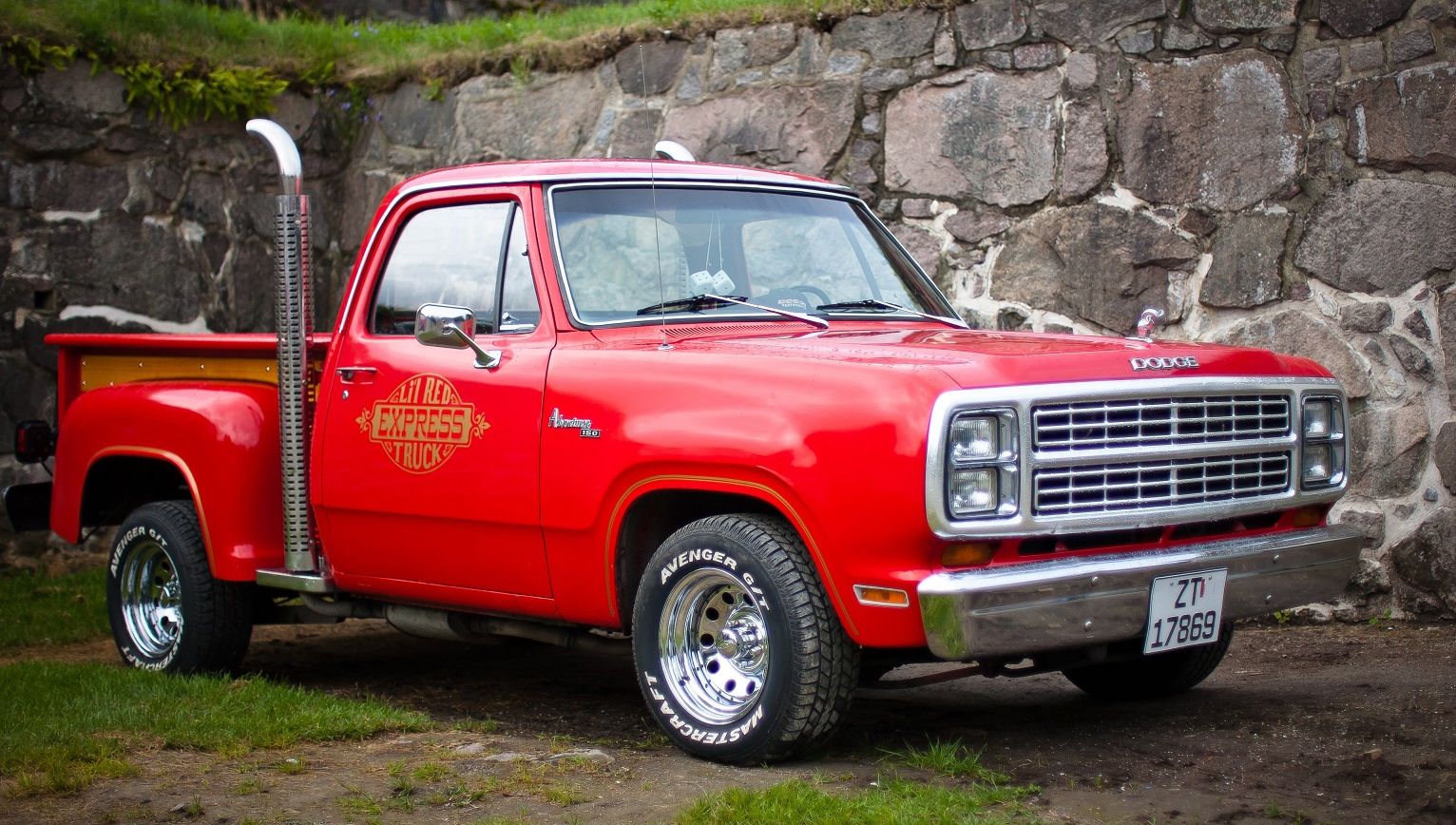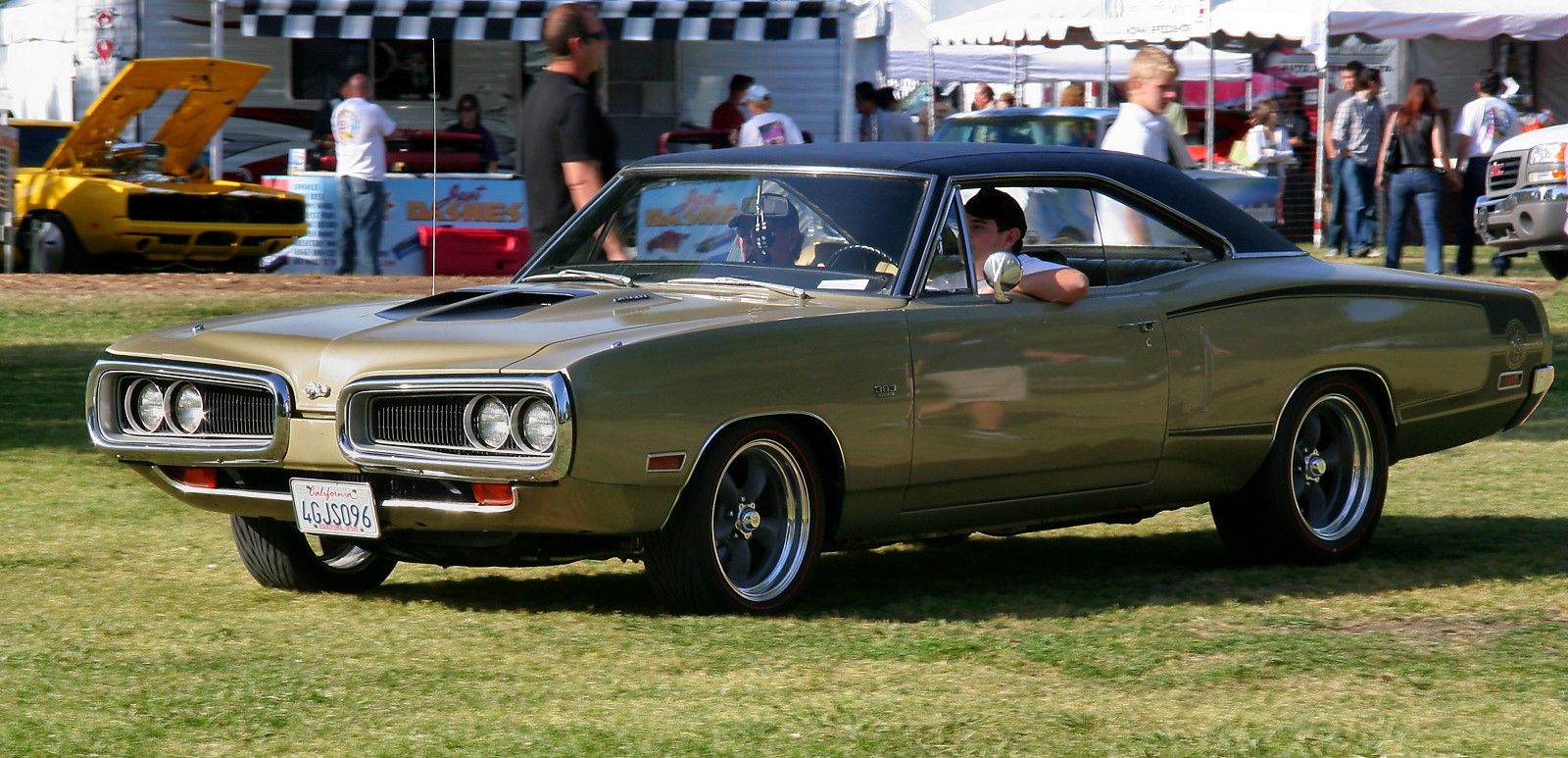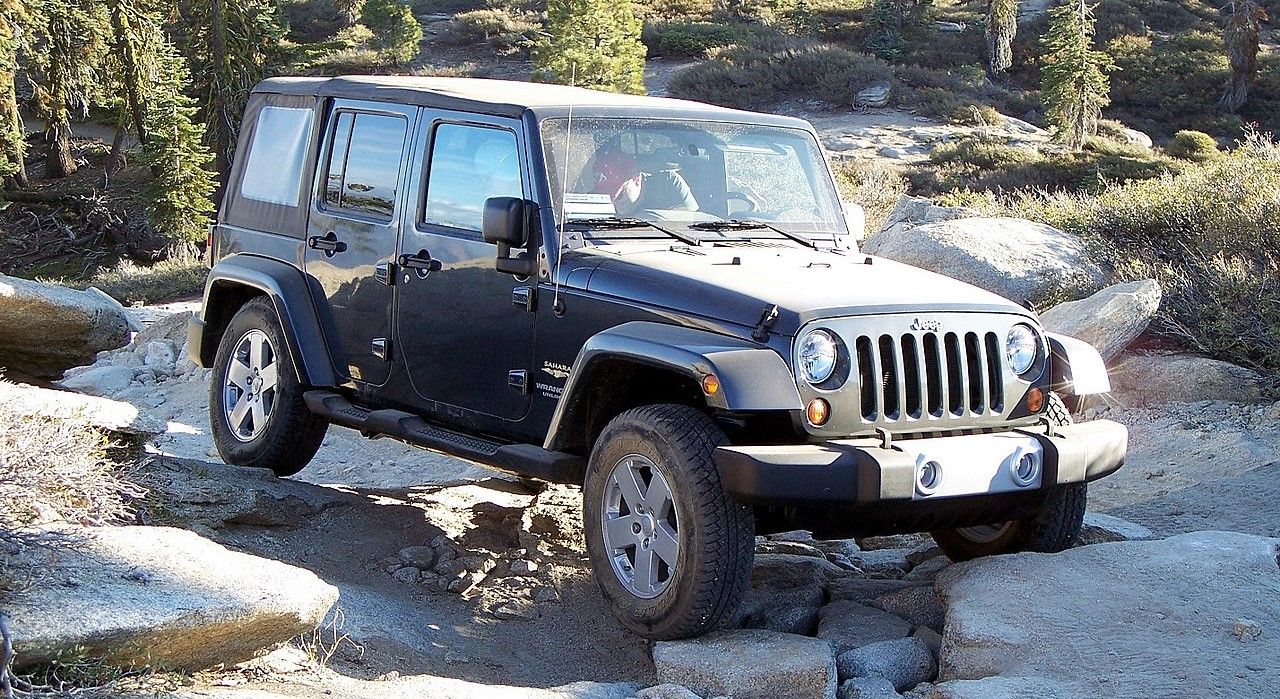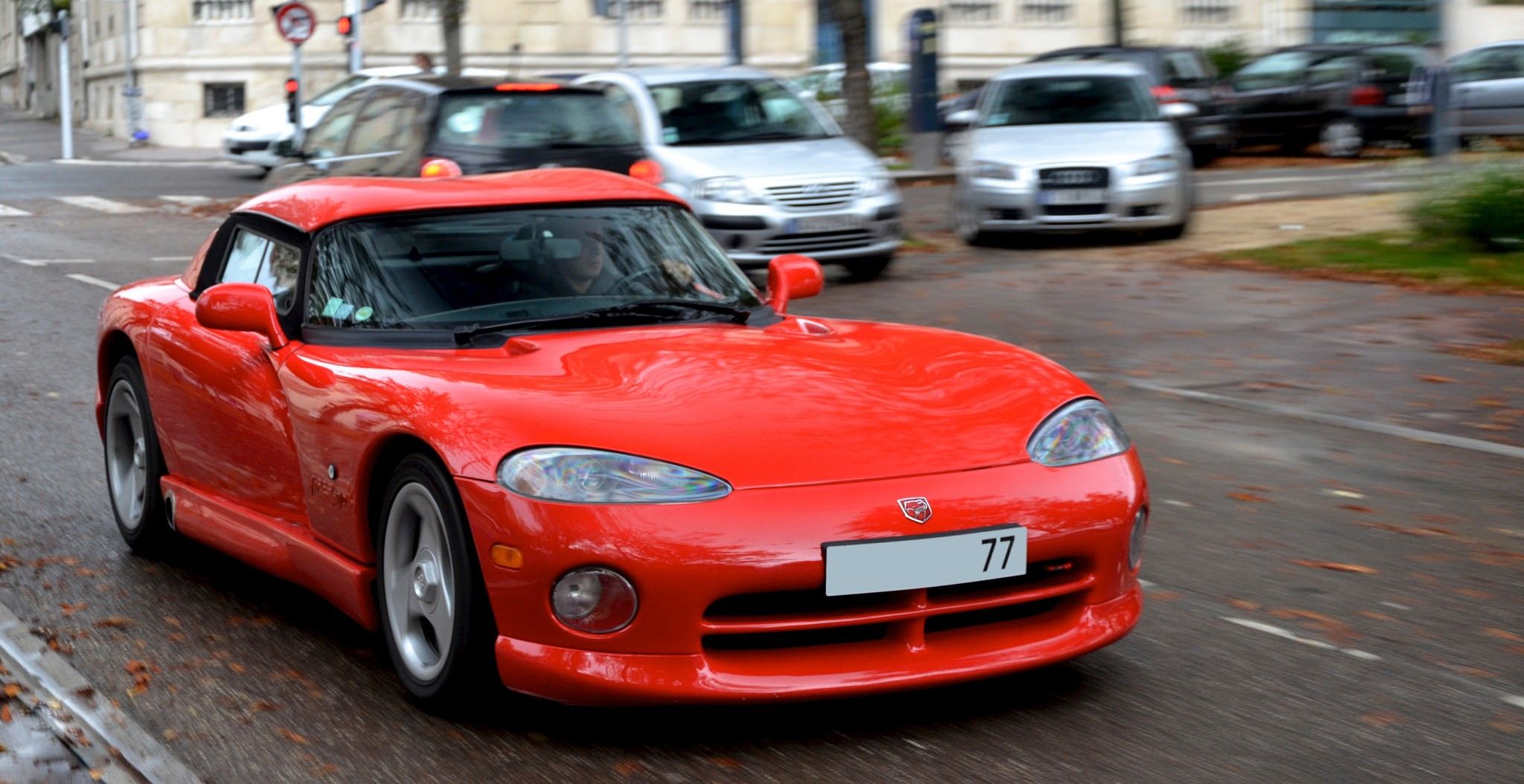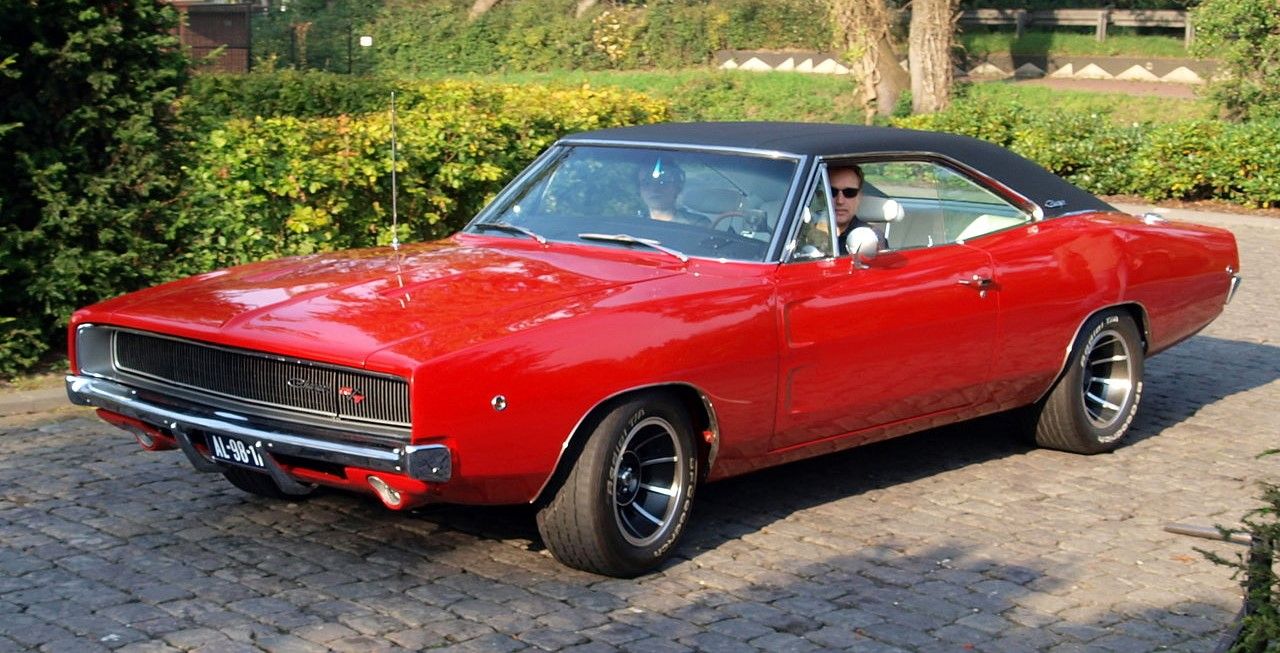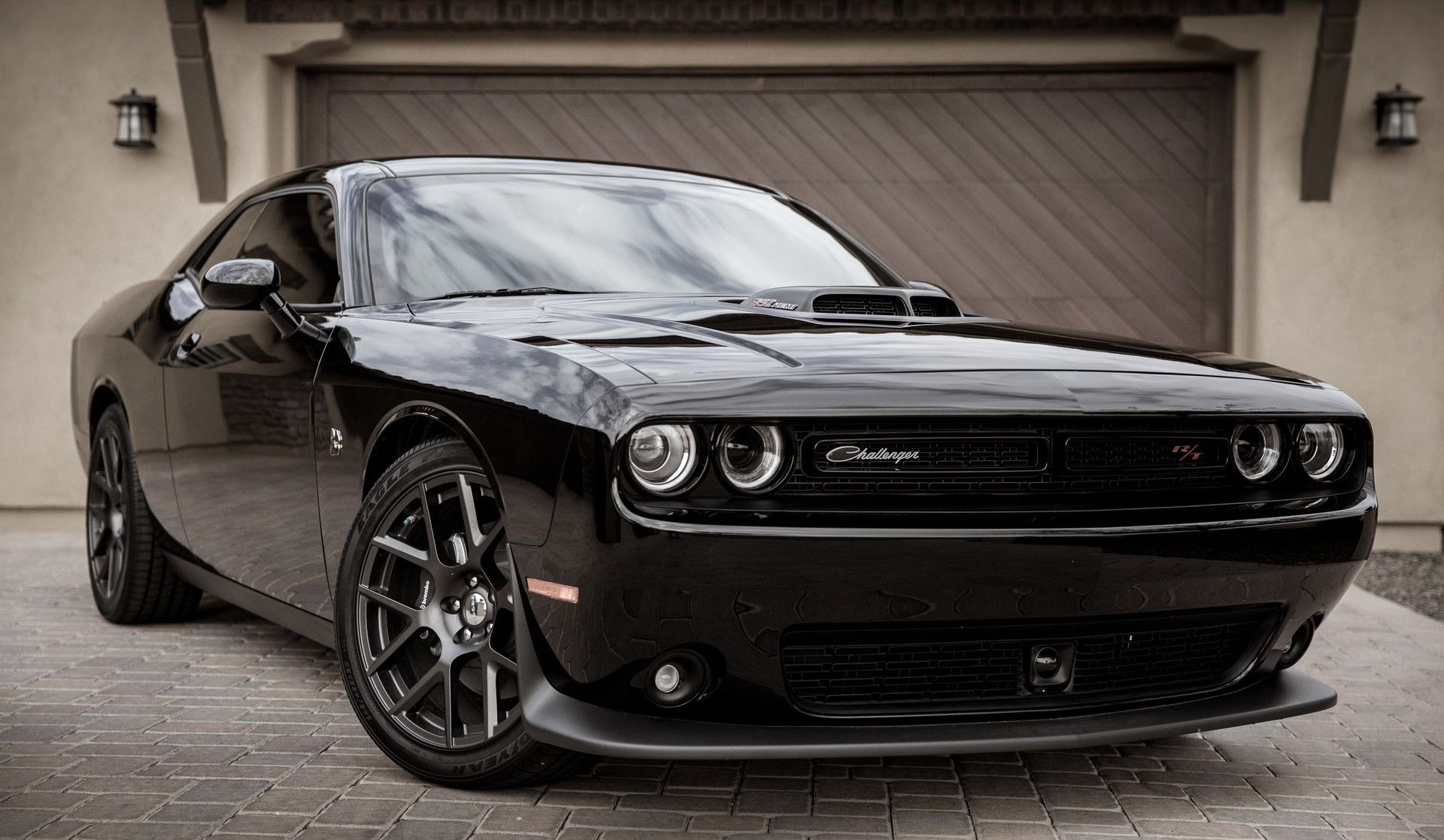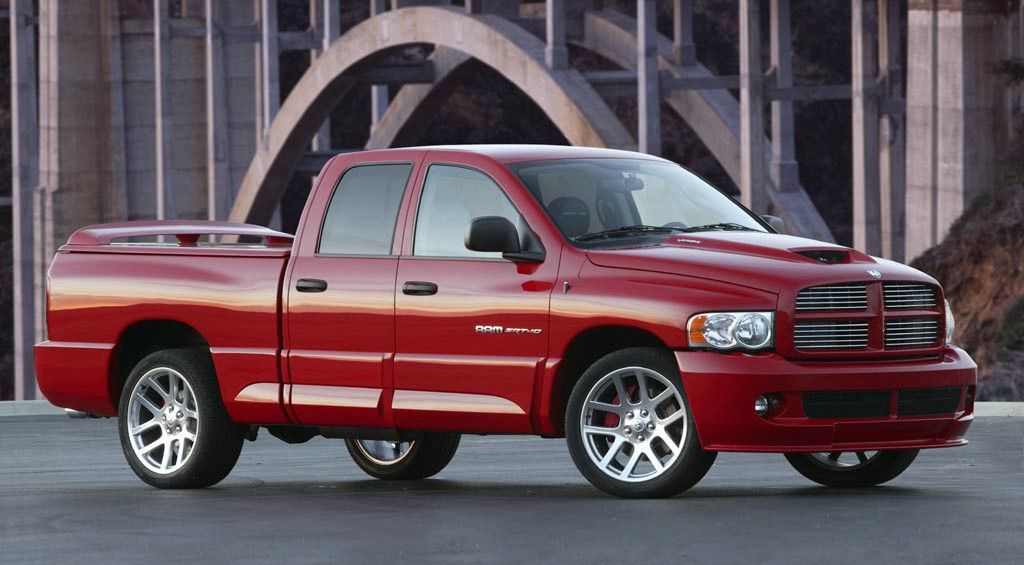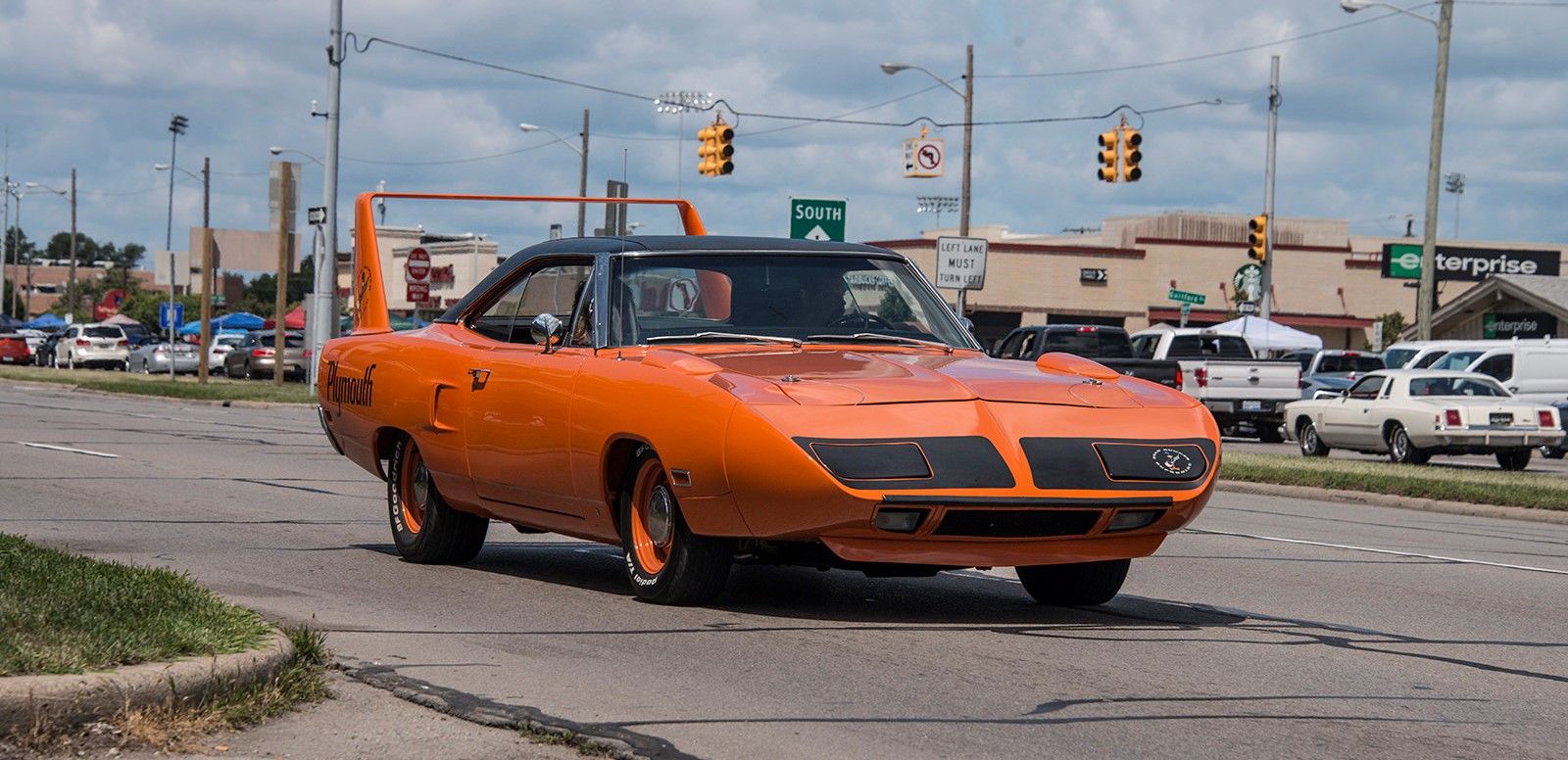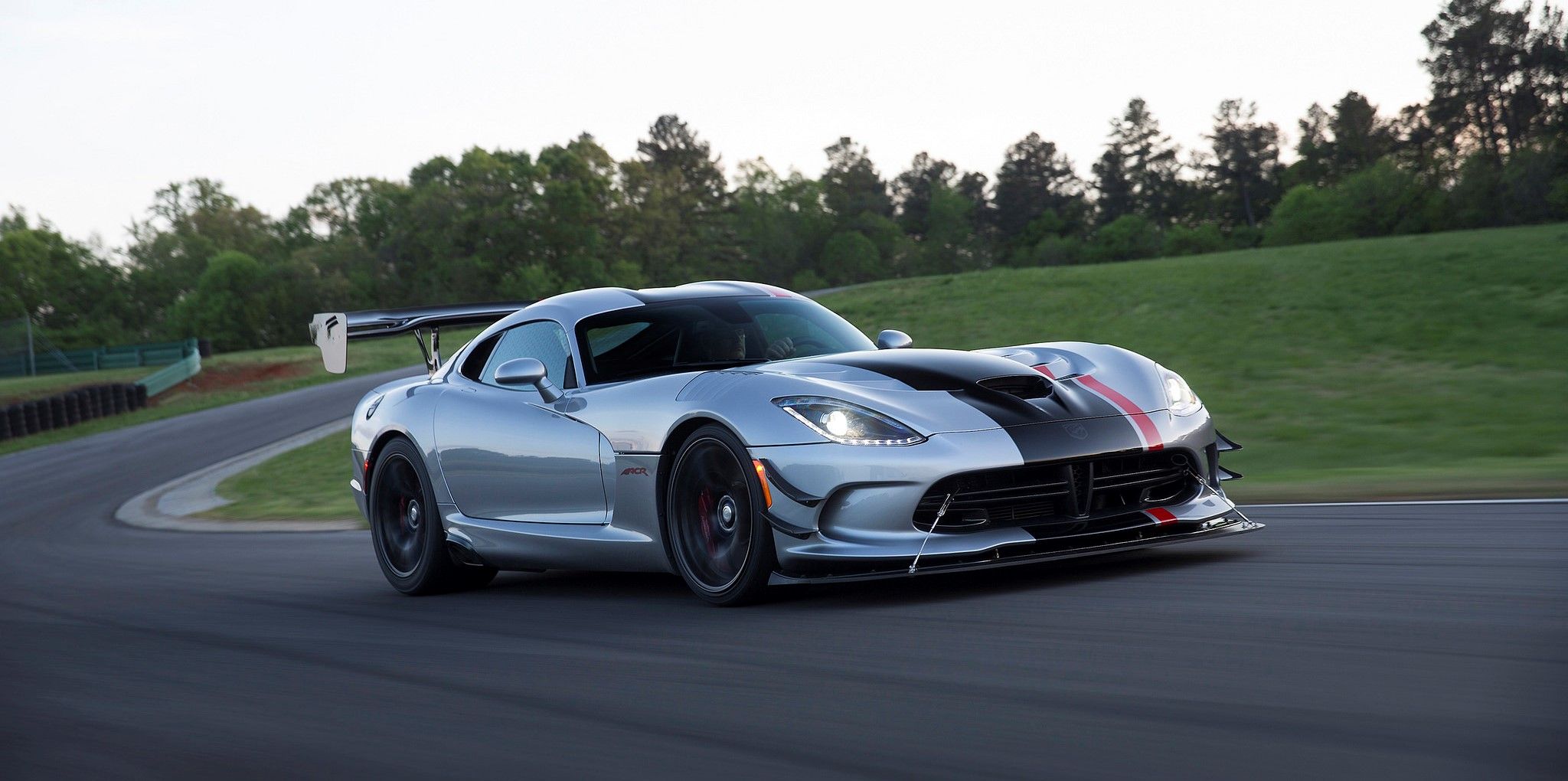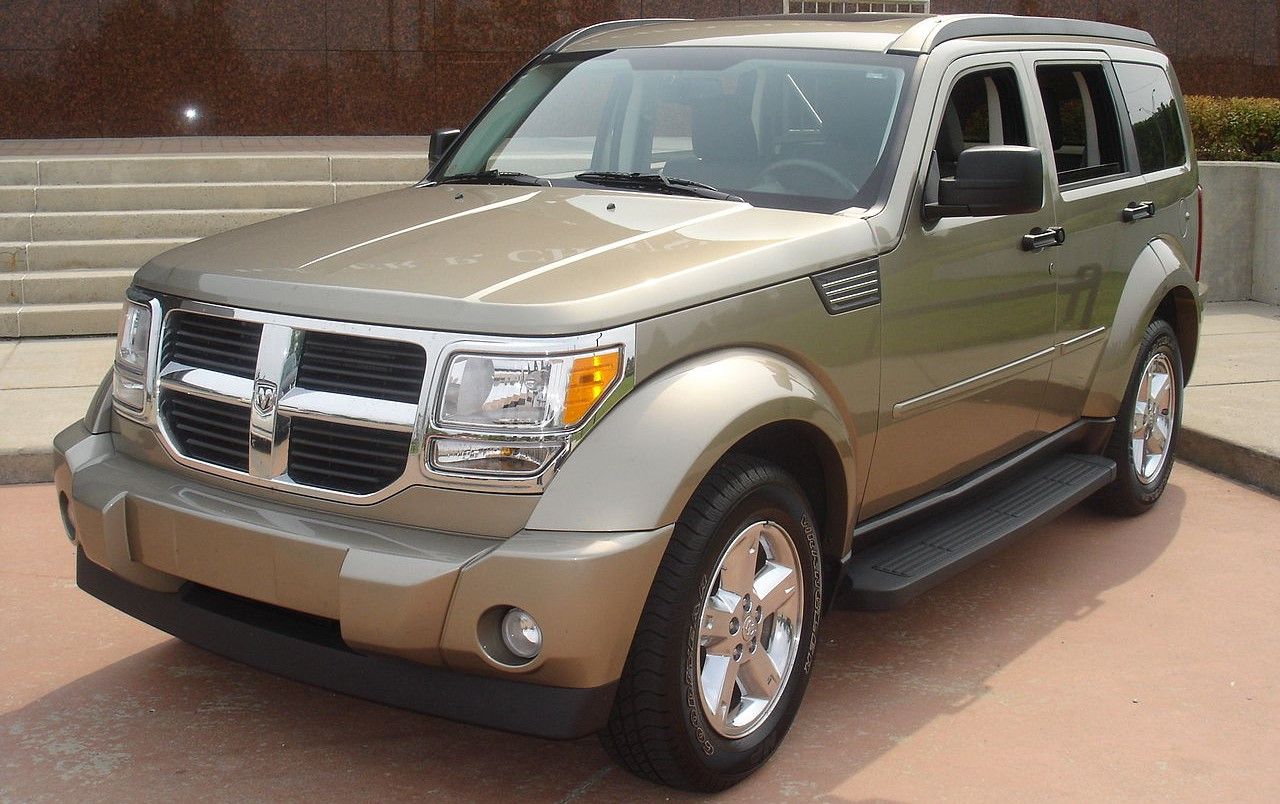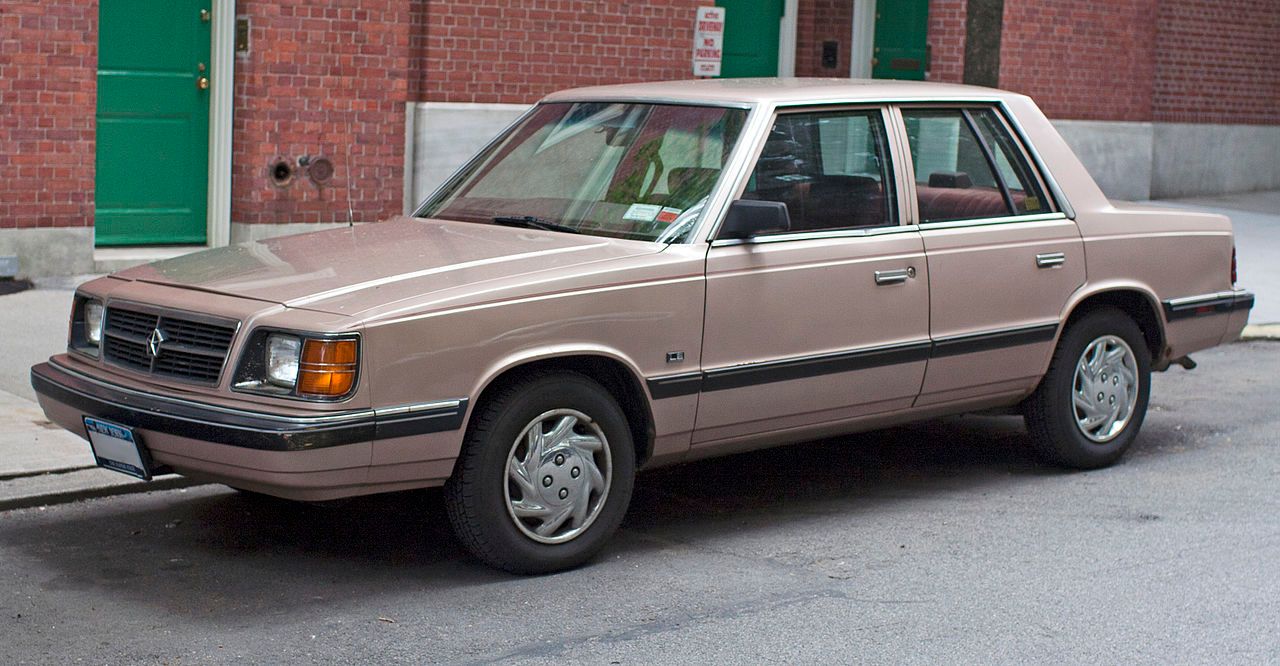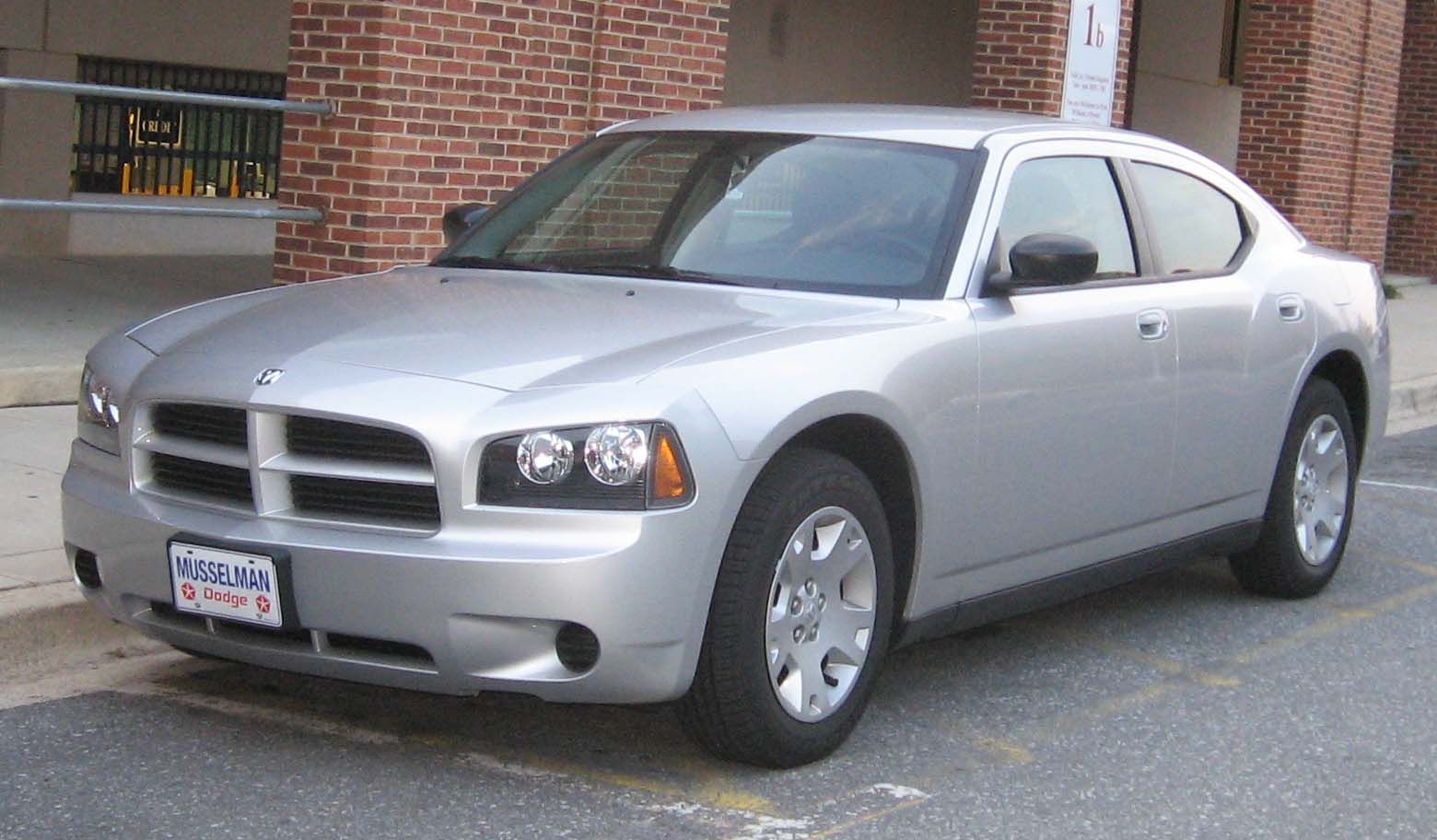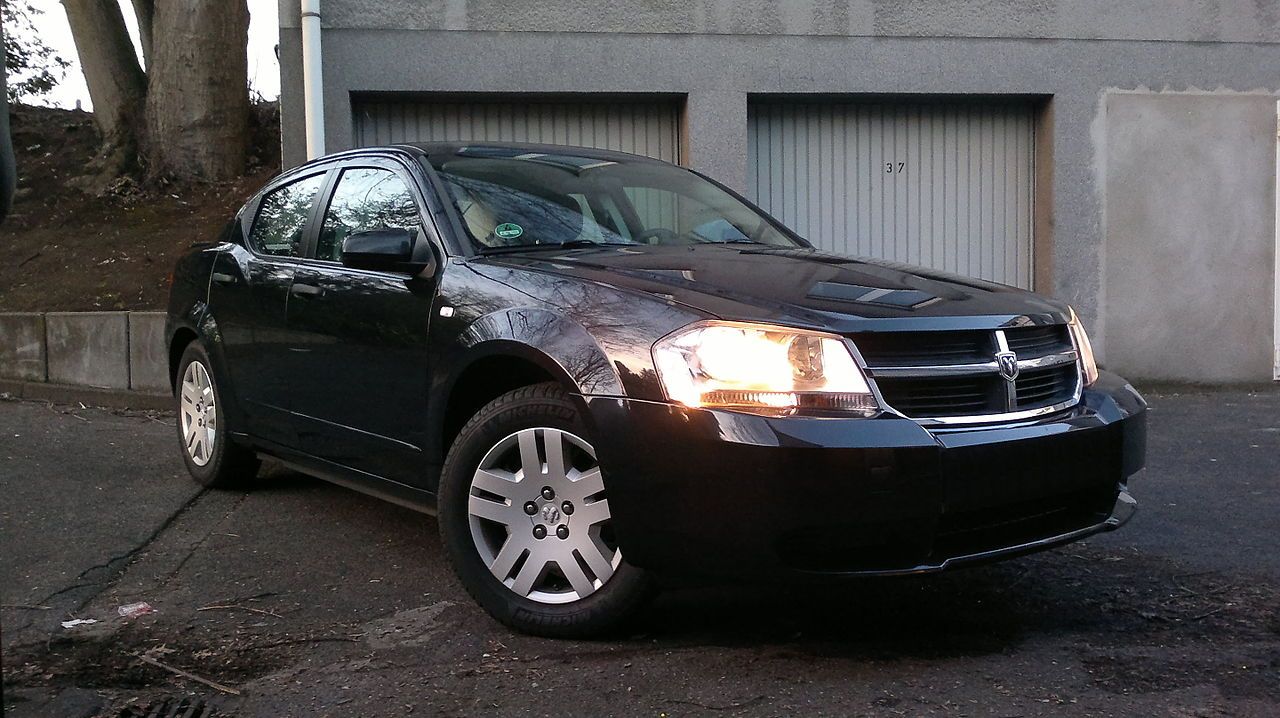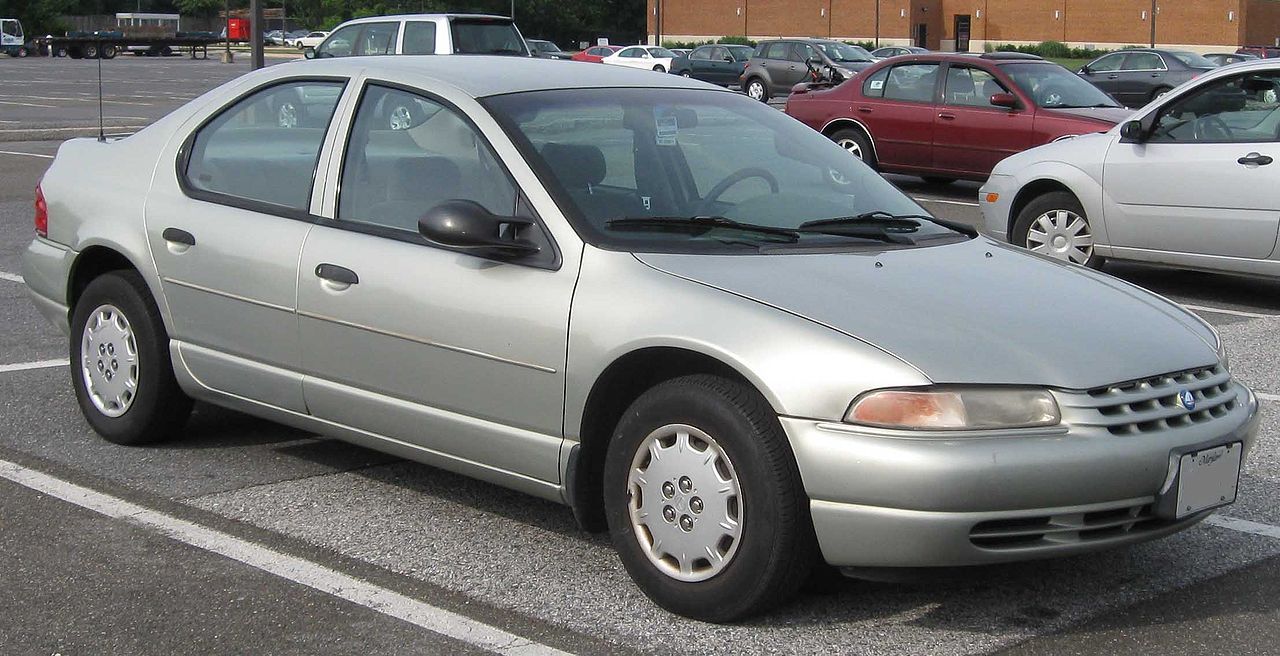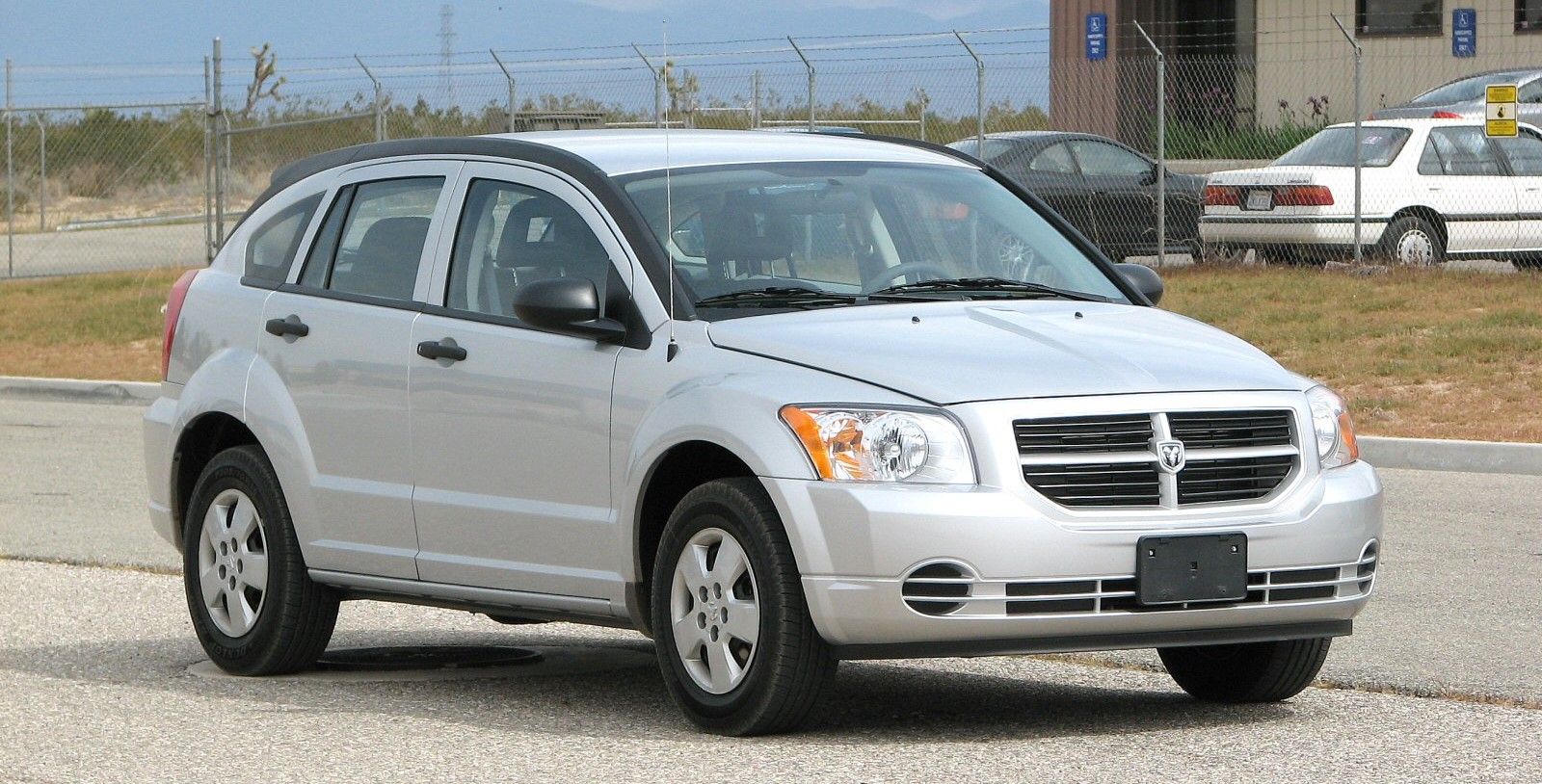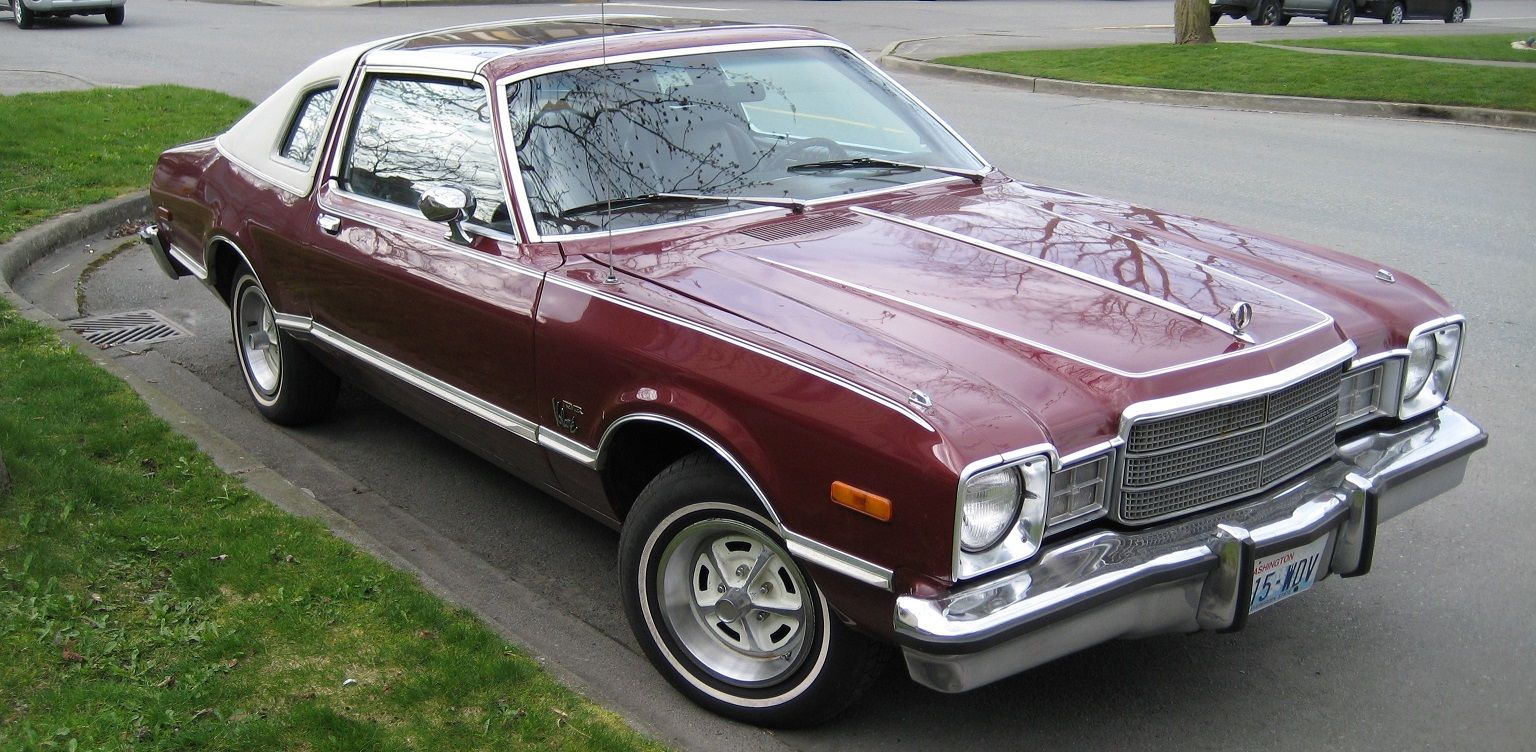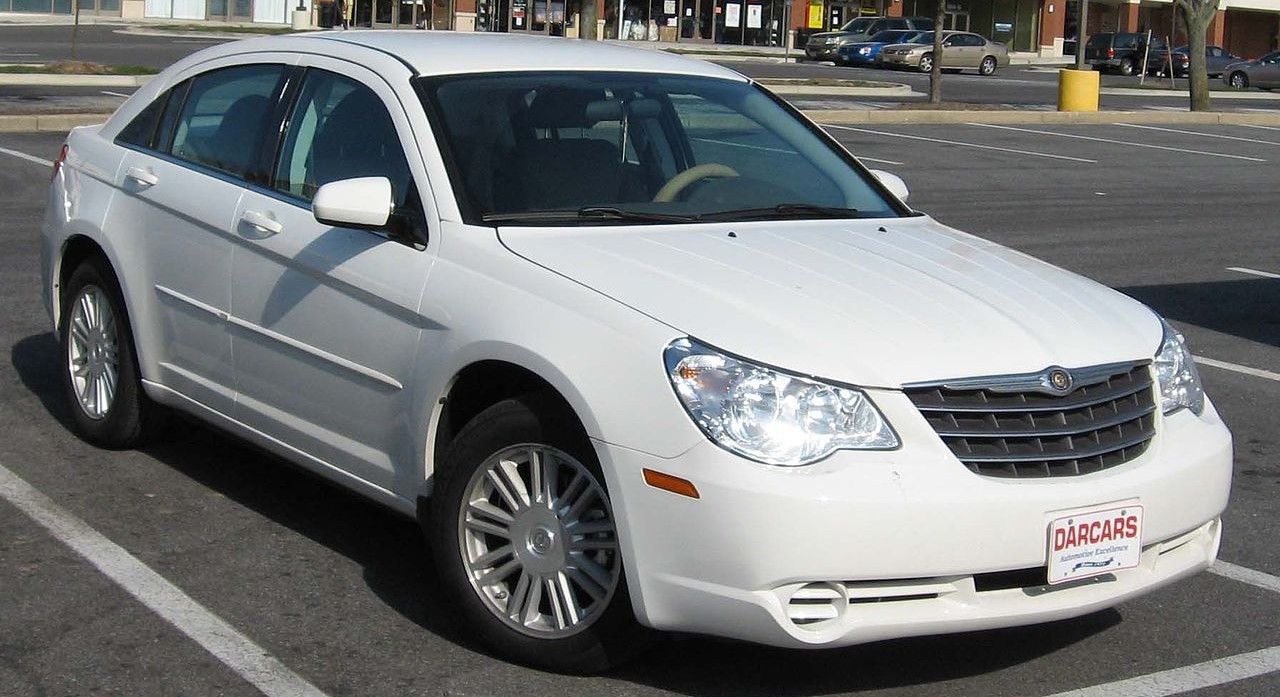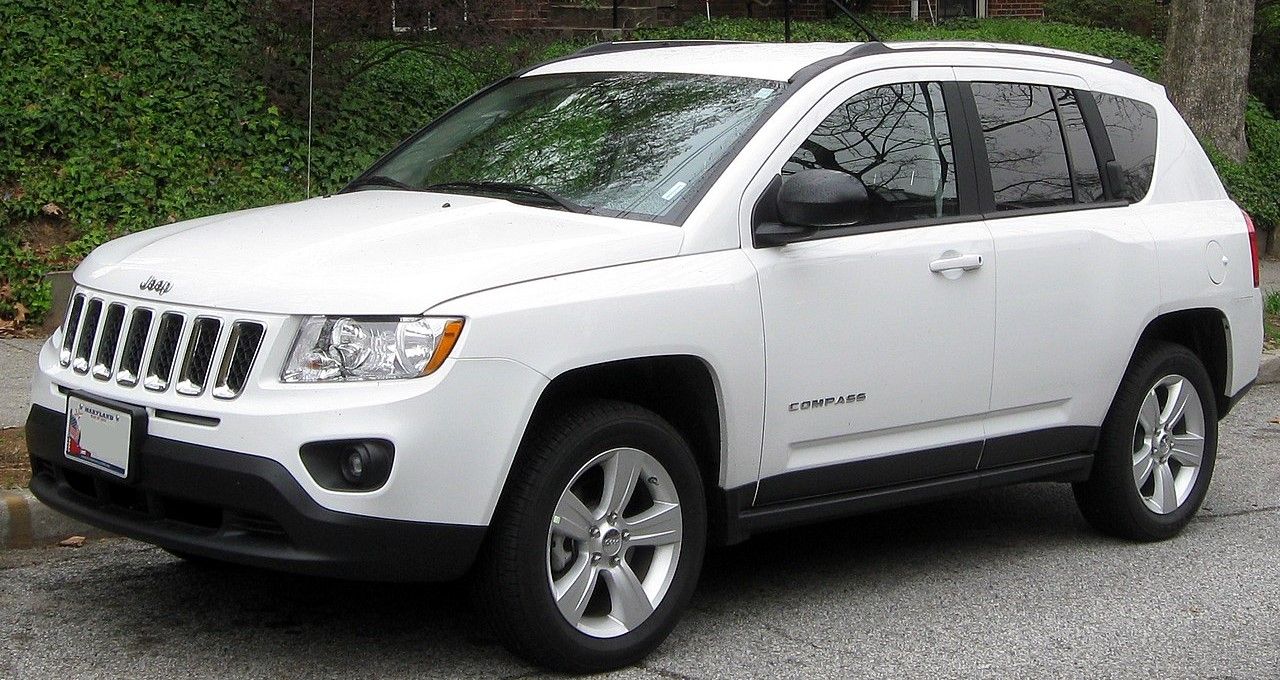Of the Big Three, Chrysler has always been the quirkiest brand, in both the best and worst ways. Dodge and Plymouth produced some of the most amazing muscle cars of the ‘60s and the ‘70s. The Mopar big-block engines were some of the biggest and most powerful motors of the era. These engines would power some the most epic-looking models of Mopar's history. In today’s market, the company has played a large role in bringing American muscle back to the market. These new muscle cars have an old-school flair that’s not found in their competition while simultaneously providing astronomical horsepower figures. If that wasn’t enough, the company created a world-leading supercar that still offers unbeatable performance after its discontinuation.
While many amazing cars have come out of Chrysler factories, there are just as many, if not more, dreadful cars that were produced by the automaker. When it comes to bad Mopars, they tend to be some of the worst vehicles on the market. Besides generally suffering from hideous styling, such models also manage to be poorly designed underneath the skin. There were engines that earned a name for self-destruction, platforms that were underdeveloped, and then, there were the interiors. There are toy cars that have less plastic-y and more ergonomic interiors than Chrysler’s worst models. Needless to say, there are many fans and many critics of Mopar vehicles, and both sides have good reasons to hold such opinions. Here are 20 models that show both sides of the argument.
20 Dodge Lil Red Express - The Best
During the late ‘70s, automotive performance in the US basically died. Gigantic smog-choked V8s produced embarrassing amounts of horsepower, and the companies were floundering in their attempts to make their old engines conform to new emissions regulations. However, Dodge exploited a loophole in the legislation with the Lil Red Express.
As trucks had to meet less stringent emission requirements, Dodge stuck its hotly tuned 5.9-liter police V8 in its D-Series light-duty pickup.
It not only looked fast with its eye-catching red paint, door graphics, and semi-truck-style exhaust stacks; this truck was also fast. It was one of the fastest American vehicles during its two-year production, according to Automobile Magazine. Even though 225 horsepower from a 5.9-liter V8 sounds like a pathetic number by today’s standards, it was a shockingly high figure for the time. For comparison, the Pontiac Trans Am’s 6.6-liter V8 produced 220 horsepower in its high-output form. While the Dodge Warlock pickup predates the Lil Red Express, it didn’t stand out nearly as well. Besides, the Lil Red Express’s bright red paint and decals, this pickup had a wooden bed floor, and the bed’s exterior was lined with wood as well. However, emissions laws quickly caught up with Dodge, and the pickup was discontinued.
19 Dodge Super Bee - The Best
Muscle cars aren’t necessarily viewed the same way today as they were when they were new. Chrysler’s intermediate B-body platform underpinned many of the company’s muscle cars and family cars. On that platform, Dodge built the Coronet, a simple family hauler that had an R/T trim which made shopping trips much quicker at a premium price. The Super Bee, also based on the Coronet, was a budget entry to the muscle-car scene in the late ‘60s and the early ‘70s. While the Coronet R/T was a well-equipped performance car, the Super Bee offered cheap big-block power with as few options as possible for a low price and high performance. These days, performance models almost always come with every option or are expensive, stripped-out track toys. The Super Bee came standard with a specially tuned 6.3-liter V8 hooked up to a 4-speed Hurst manual transmission as standard. Luxuries, such as power steering, power brakes, air conditioning, and bucket seats, were available as options. While starting out as a base performance model, a Super Bee could be equipped much like an R/T. However, the most enticing option was the 426 Hemi, rated at 425 horsepower. Unfortunately, these incredible engines weren’t installed in many cars due to their high price and unbelievable 90-day warranty.
18 Jeep Wrangler - The Best
There are few cars that encapsulate a segment quite like the Jeep Wrangler. While the Jeep started out as a military vehicle made by Willys, that model was adapted for civilian use under the CJ name and quickly became popular. After moving to AMC’s lineup, the brand was bought out by Chrysler, where the model was later rebranded as the Wrangler. Right now, the automotive market is crowded with crossovers and SUVs that feature the most modern and efficient designs, yet the old-fashioned Wrangler continues to print money for Chrysler.
People are willing to pay for poor gas mileage and a crude design in exchange for off-road capability, boxy styling, and a lot of character.
These models have remained shockingly simple over the years, with most of the car’s engineering being put into its off-road capability. Even the newer, more sophisticated JL Wrangler is still an incredibly capable vehicle that’s unmatched by anything else. There are very few models that remain on the market with twin live axles, something that greatly helps off-road capability. When it comes to designs that stand the test of time, the Wrangler manages to be different and capable enough to outsell and outlast more practical but blander alternatives.
17 Dodge Viper RT/10 - The Best
While Carroll Shelby is most well known for his work with the Cobra and the Ford Mustang, he spent the ‘80s and the ‘90s with Chrysler. Even though a Shelby Mopar might sound like an incredible muscle-car combination, Chrysler was mostly building cheap family cars and hatchbacks at the time. However, the Viper was something different. It’s not a well-kept secret that Carroll Shelby put work into the Viper RT/10. With an 8.0-liter V10 stuffed in a 3,300-pound body, this small roadster was a rocket. It quickly gained a reputation for being a widow maker, as its huge motor and low curb weight were combined with a lack of safety. A Viper owner would have to wrangle all 400 horsepower without airbags, traction control, or antilock brakes. Over the years, government regulations tried to tame the Viper, but nothing could stop it from being an unruly monster. While the coupe body style may be a more iconic shape and is more aerodynamic, the original RT/10 roadster was the most sparsely equipped sports car of the ‘90s, as it lacked a roof and exterior door handles. This Viper was one of the last sports cars that truly let drivers take their lives into their own hands, resulting in a uniquely exhilarating open-air experience.
16 1968-1970 Dodge Charger - The Best
Muscle cars are one of America’s most defining automotive segments. Each brand has its own signature model. The Camaro and the Mustang are widely recognized due to their strong sales and handsome looks. It also helped that these models served the muscle-car community for years after other competitors had left the market. However, neither of those two icons were able to provide the sheer attitude of the second-generation Dodge Charger. With its huge, gaping grille, recessed rear window, and long, clean lines, the ’68-’70 Charger stands out from other classic muscle cars.
This large coupe wasn’t just a looker, but with several big-block options for under the hood, including the famous 426 Hemi, it was quick, too.
With its badass looks and incredible power, the Charger has become a timeless classic. Perhaps the model’s only big flaw was that it had the aerodynamic qualities of a brick, making the model ineffective on the high-speed NASCAR circuits. As a result, the Charger 500 and the Daytona were created. The 500 offered a flush grille and a rear window, making it slightly more aerodynamic but not enough to be competitive. Going for broke, Dodge developed the Daytona, which had a nosecone and a gigantic rear wing, making this former brick effortlessly slip through the air at 200 miles per hour.
15 Chrysler 300 - The Best
No single car has unanimously been declared as the first muscle car. A common consensus is that the Pontiac GTO was the first, but there were a few other contenders that were released before the Goat. There was the Chevy Corvair Monza, a sporty take on the small family car. Some experts consider the 1950 Oldsmobile 88 to be an early attempt as well, given its high-power design on a family platform. There are even claims of cars from the 1920s being the earliest attempts. While not always considered, some point to the original Chrysler 300 as the first muscle car. The most legitimate criticism of this belief is that this Chrysler is too large and expensive to meet the requirements. However, even if the 300 wasn’t the first muscle car, it still boasts some impressive stats. Its 5.4-liter FirePower Hemi V8 produced 300 horsepower, a figure the car was named after. In later iterations, the 300 became one of the most powerful cars sold in the US. Some of these models produced up to 390 horsepower, and its muscle-car status is bolstered by its presence in NASCAR, where it performed quite well for a luxury model. Whether or not it's actually a muscle car doesn’t change the fact that this is one of the best Mopars ever made.
14 2008+ Dodge Challenger - The Best
Ford was the first company to realize that the American public wanted a retro look in its muscle cars in 2005, leading to a muscle-car renaissance for the automotive industry. The 2005 Mustang’s immediate success was a surprise. As the Chevy Camaro had been discontinued a few years prior, the GTO was floundering with its modern look, and Dodge rebranded the Charger as a four-door sedan. The other members of the Big Three decided to create competition for the new Mustang. Dodge was the first to the scene with a new Challenger in 2008. Dodge decided to give its new muscle car an extremely retro exterior.
While the Challenger was rather portly in comparison to the svelte Mustang, the Mopar was offered with a potent 425-horsepower, 6.1-liter Hemi.
Later models received a 6.4-liter Hemi that was good for up to 485 horsepower. Of course, the Hellcat and Demon have been making headlines recently. While the Challenger never received a full redesign and is now 10 years old, the Hellcat’s 707-horsepower, supercharged motor was enough to bring attention back to the aging Mopar. The new 840-horsepower Demon has now stolen the spotlight, as it's currently the quickest car in the world. Who says old dogs can’t learn new tricks?
13 Dodge Ram SRT-10 - The Best
Despite the American market currently buying many, many pickups, there have been few performance trucks available since the early 2000s. This is a shame, as the segment produced some truly insane vehicles. Besides Dodge’s police-powered ‘Lil Red Express, there was the supercar dominating GMC Syclone, Ford’s supercharged Lighting, and, of course, the Dodge Ram SRT-10. Where many of these pickups simply used forced induction on their standard motors, the insane creators at SRT decided to do things a little differently. Instead of modifying the stout 5.7-liter Hemi of the standard Ram, the Viper’s 8.3-liter V10 and six-speed manual were dropped in the engine bay instead. With 500 horsepower, the single-cab version became the fastest production truck in the world, reaching nearly 155 miles per hour. To appeal to drivers with families to cart around, a quad-cab version was released with an automatic transmission from the heavy-duty trucks. While being heavier and having fewer cogs, this was still a surprisingly quick pickup. Unfortunately, the Ram SRT-10 left the lineup after 2006 and left no successor. With less demand for fast trucks and the Viper recently being discontinued, it’s unlikely we’ll ever see another pickup quite like the SRT-10.
12 Plymouth Superbird - The Best
Today, NASCAR is often viewed as a bit of a joke. Its simple oval tracks don’t endear many to the sport, and referring to the fiberglass shell race vehicles as “stock” cars doesn’t help matters. However, there was a time when automakers took this sport quite seriously and even developed cars specifically for such tracks. Dodge was the first to create something truly unique for the oval. The Dodge Charger Daytona featured an aerodynamic nosecone and a gigantic spoiler. Its new shape and Hemi power meant it was the first car to reach 200 miles per hour on the NASCAR circuit. More iconic than the Daytona was the Plymouth Superbird.
Based on the Roadrunner, the Superbird had a slightly revised wing and nosecone from the Daytona, allowing for superior aerodynamics.
In its street spec, the Superbird featured handsome graphics, with the pop-up headlights being finished in matte-black, large ‘Plymouth’ logos on the rear quarter panels and illustrations of the Looney Tunes Roadrunner emblazoned on that titanic spoiler. While it was considered ugly by many when it was new, it's become one of the most valuable Mopars ever created and has a devout following that's willing to spend well over six figures on nice examples.
11 Dodge Viper ACR - The Best
There are few who consider the Dodge Viper to be a plush car. Its side exhausts are infamous for burning ankles that dare touch the side skirt, its various interiors were laughable low quality in many examples, and the early models completely lacked modern safety features such as airbags, traction control, and anti-lock brakes. The original model didn’t even have a roof or exterior door handles. It would be ludicrous for anyone to request an even more hardcore Viper. Yet, Dodge provided just such a car. The Viper ACR was first introduced in 1999, but the real high-performance version was released in 2008. This ACR featured stiffer suspension, a front and rear spoiler, and stickier tires. There was even a hardcore package for those who thought the standard ACR was too comfortable. Three years after a new Viper generation was released in 2013, another ACR came out to dominate the track toy segment once again. This model featured similar but more advanced modifications in comparison to the previous version. Both models were sent to famous tracks where they set lap time records, often beating cars worth exponentially more. For example, the latest ACR was approximately one second quicker around Laguna Seca than the $845,000 Porsche 918.
10 Dodge Nitro - The Worst
The SUV and crossover markets are booming right now. Besides Jeep models, the only current Mopar offerings are the cheap Journey and large-ish Durango. It’s remarkable that any brand can be so inactive in such a lucrative market. The most popular segments are the compact and mid-size crossovers, and Dodge doesn’t have competitive offerings in these markets. Perhaps, this is a result of the last time the company tried to sell such a model. In 2007, Dodge released the Nitro alongside the similarly horrendous second-generation Jeep Liberty. Pairing a boxy shape with fat fender flares, the Nitro wasn’t much of a looker. Despite its fiery name, it wasn’t quick, as it was either powered by an aging 3.7-liter V6 or a 4.0-liter V6 sourced from a minivan. While it may give the impression of having off-road capabilities, given its Jeep connections, the Nitro was longer and wider, and four-wheel drive was optional. Worse still, the Nitro was released during some of Chrysler’s darkest years, and many of its components reflected this. Its interior was made from the cheapest and most revolting plastics known to man, and its elderly base powertrain wasn’t doing it any favors either. It didn’t even get decent gas mileage for an entry-level, mid-size SUV, averaging only 18 MPG in 4X2 models.
9 Plymouth Reliant - The Worst
Much like the late 2000s, the late ‘70s were a hard time for domestic manufacturers in the US. Not only were emissions and safety legislation robbing cars of their performance and looks, but the American automakers were also hardly producing the highest-quality vehicles at the time. Chrysler was hit particularly hard during this time, due in no small part to its largely substandard lineup. To bring the company back from the brink, Chrysler developed the K-Car platform, which underpinned the Plymouth Reliant and several other near-identical and interchangeable models.
While it was cheap and attractive to buyers in the ‘80s, this budget, front-wheel-drive model hasn’t aged very well.
It looked like it had been styled by a particularly unimaginative four-year-old. In the interest of making the car as cheap as possible, it featured an interior that was sparse, even for the time it was released. The Reliant was, unsurprisingly, powered by several small four-cylinder motors, none of which produced a significant amount of horsepower. While this car did have a positive reception back in the ‘80s, earning Motor Trend’s Car of the Year in 1981 and selling over 2,000,000 units between the Plymouth and Dodge divisions, nobody misses the K-Car anymore.
8 Dodge Charger SE - The Worst
Back in the ‘60s and the ‘70s, the Dodge Charger SE was the highest trim level for this iconic model. This trim could be equipped on the high-performance R/T models, making for a semi-luxurious muscle car. In 2006, the Charger would return after a long hiatus, and its new form was fairly controversial. While this iteration of the fabled model was rear-wheel drive with optional Hemi power under the hood, its new body was of a four-door sedan rather than a coupe. Its styling didn’t stand out too much either. However, its performance did stand up to scrutiny, making it a fast choice for a family car. That said, the previously top-of-the-line SE model became the new base trim for the Charger. With a lacklustre interior filled with cheap, injection-molded plastic, this Charger wasn’t particularly aspirational. The worst part was the powertrain. It was powered by a 2.7-liter V6 that was incredibly unreliable, with chronic, engine-seizing sludge problems. Sending that V6’s minuscule 190 horsepower to the rear wheels was a four-speed transmission that robbed what little torque the motor could produce. If that wasn’t bad enough, the engine’s output dropped to an even more pathetic 178 horsepower in 2008. Mercifully, this motor was replaced by the vastly superior 3.6-liter Pentastar V6 in 2011.
7 Dodge Avenger - The Worst
Today, Dodge’s only offerings that aren’t SUVs or vans are the Charger and the Challenger. While these two cars do appeal to a niche market, the company doesn’t have a competitor of any kind in the compact or mid-size sedan segment. Perhaps, that’s because the last time the company entered this market, the model they offered was the awful Avenger. While it has a tough-sounding name and sported a somewhat aggressive look, this car was a woefully inept offering in the competitive mid-size sedan segment. While it may have looked decent from the front and the rear, a quick glance at the car’s profile revealed the Avenger’s ghastly proportions—not that a handsome appearance would’ve saved this car from its dreadful underpinnings. The JS platform that the Avenger was built on offered nothing whatsoever over its competition. Besides being smaller and cruder in design than alternatives like the Camry and the Accord, it also had some terrible motors under the hood. The base four-cylinder’s fuel economy lagged behind the competition, and the optional V6 was the abysmal 2.7-liter motor. While a far superior 3.5-liter motor was available in top trims, nobody was going to buy a loaded Avenger. Given today’s crossover-obsessed market, perhaps the Avenger did Dodge a favor by getting them out of this dying segment early.
6 Plymouth Breeze - The Worst
The ‘90s was a strong time for all the Mopar brands, as the company was producing appealing models that offered unique designs and better equipment than the old K cars. While these new models weren’t always the most durable vehicles on the market, they did prove to be quite popular. The Dodge Intrepid was a practical family car with a sleek exterior and a roomy cabin, and the Chrysler LHS managed to be a successful mid-level luxury car. Dodge was also selling a line of popular SUVs and trucks at the time. However, the Plymouth Breeze and its corporate twins, the Chrysler Cirrus and Dodge Stratus, were terrible cars.
While these cars were stylish back in 1995, they've aged rather poorly, even worse than Chrysler’s other models from the ‘90s.
This is largely due to the car’s half-hearted cab-forward design that's no longer desired by consumers. These models had an option for a Mitsubishi V6 that produced a decent amount of power, but many were likely sold with the base four-cylinder motor; unsurprising given the car’s low-end nature. Regardless of which brand this model came from, all were almost identically sparse on the interior and uninteresting on the exterior.
5 Dodge Caliber - The Worst
Dodge isn’t currently known for selling small cars, and some may see that as a good thing. Its last attempt at a small car was the Dart. While the original Dart was known for its rugged simplicity, the newer model became widely known for its poor design. Furthermore, while the Dart of the 2010s will be remembered for its fragility, if it's remembered at all, it's a veritable tank in comparison to the Dodge Caliber. It’s uncertain whether the Caliber was meant to be a compact hatchback or a small crossover, but regardless, it's an awful vehicle. Replacing the tiny, practical, and cheap Neon, the considerably bulkier Caliber still had to be motivated by small four-cylinder motors. While some were purchased with a manual transmission, many were equipped with an awful CVT built by Jatco, a company that had to be pushed for higher quality by Nissan, another user of these transmissions. Even the SRT4 Caliber was worse in comparison to the Neon it replaced, given its hefty curb weight and its higher center of gravity. Unfortunately for Dodge, the Caliber was sold throughout the world, being one of the few Mopars to be sold new in certain parts of the world.
4 Plymouth Volare - The Worst
When an automaker gets into financial trouble, rarely can the problem be pinned to a specific car. It’s often due to an entire lineup of mediocre or subpar models and poor quality control. However, the Plymouth Volare was an exception. In the ‘60s and the ‘70s, Plymouth’s small car was the Valiant, a car that was as robust as it was cheap. While there were performance variants, some with big-block power hiding under the hood, the Valiant wasn't a muscle car under most circumstances—just a normal, compact family sedan. After gaining a positive reputation, Chrysler decided the Valiant and the Dart, Dodge’s take on the model, needed to be replaced with the Volare and the Aspen respectively. While not differing too much mechanically from the older models, these new cars were horribly rust-prone. While they were introduced in 1976, the Volare and the Aspen’s oxidation problems quickly became known to the public. The first two model years, which were the most rust prone, were recalled in 1980 and applied to cars that had started rusting within the car’s first three years of ownership. Yes, these were cars that could be expected to rust after only three years. Starting in 1978, much of the rust problems were solved, and there was even a muscle-car variant known as the "Super Coupe," but the damage had been done.
3 Chrysler Sebring - The Worst
Mid-size luxury cars have never been too popular in the US. During the 20th century, luxury models always followed the “bigger is better” school of design. Land yachts became popular due to how ostentatious they were. While gas got expensive in the ‘70s, there was never a point where buyers completely abandoned the full-size luxury car. In recent years, consumers have since turned to SUVs and crossovers for their plush daily drivers. Regardless of time period, a smaller car like the Chrysler Sebring would be unlikely to attract a large consumer base. The few exceptions to this rule are cars that blend performance and luxury, two traits the Sebring lacks. The final generation of this wretched car was the most repulsive version. Not only was an underpowered four-cylinder usually optioned, but a common V6 choice was the infamous 2.7-liter motor—truly a match made in heaven. It didn’t help that this mid-sizer was hideous, with its slashed hood and bizarre proportions. If there was one upside, it would be that the Sebring was available as a cheap and roomy convertible. However, the floppy chassis and the near-4,000-pound curb weight made it a shockingly poor car to drive. It didn’t help that this supposed luxury car had an offensively cheap interior.
2 Dodge Journey - The Worst
The crossover segment is a ridiculously lucrative market today, and Dodge is largely missing out on this automotive gold rush. While competitors are seemingly filling up their entire lineups with these pseudo SUVs, Jeep is the only branch of Fiat Chrysler that's really competing in this increasingly large segment. Dodge’s one crossover is Journey, a car that's only competitive when it comes to its low price. Much like Chrysler’s other poorly designed, modern vehicles, the Journey was released in the late 2000s. Replacing the short-wheelbase Caravan, the Journey featured four regular doors, rather than the practical sliding doors of the old minivan.
With seven seats, this mid-size crossover seems like a reasonable option, as it starts at just under $23,000.
However, it isn’t a reasonable option. Given its cheap interior and aging four-cylinder motor, the Journey’s only selling point really is its low MSRP. If a consumer is only looking for a cheap price, then a used competitor would be a much smarter purchase, as a used Toyota Highlander or Honda Pilot would be cheaper and would feature far superior build quality. Despite this fact, the Journey saw increased sales from 2010 to 2016, according to GoodCarBadCar, showing the sad preferences of the modern car buyer.
1 Jeep Compass - The Worst
Most companies are known for a wide variety of cars. Even automakers known for just building sports cars have started producing a range of family and SUV models over the years. However, Jeep has based its entire business on selling off-road vehicles. Needless to say, SUVs have ultimately dominated the brand’s lineup over the years. However, for some reason, Jeep decided to release a model that didn’t have any off-road capability whatsoever. This car, dubbed the Compass, was meant to be a city Jeep of sorts, bringing up the question of why it was a Jeep in the first place. While the idea was bad enough, the execution was even worse. The original model was a lifted Dodge Caliber that had its exterior sanded down and had a Jeep grille slapped on. But, at least, the Caliber had the SRT4 model to spice up this otherwise terrible model. And yes, the Compass usually had a CVT sending what little power it had to the front wheels. A redesign gave the model an improved look and a less offensive interior, but that didn’t stop the car from being a terrible vehicle. Perhaps most insultingly, the Compass wasn’t even the most affordable Jeep, as the mechanically similar Patriot was even more affordable, just like the vastly improved and more modern Renegade was. Thankfully, the new Compass is unrelated to the horrendous original model.
Sources: Hemmings, Dodge, The Washington Post, Allpar


